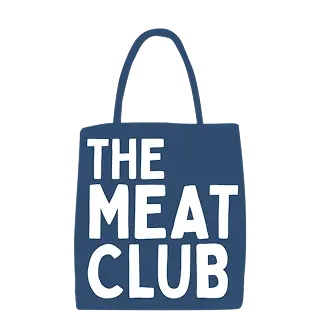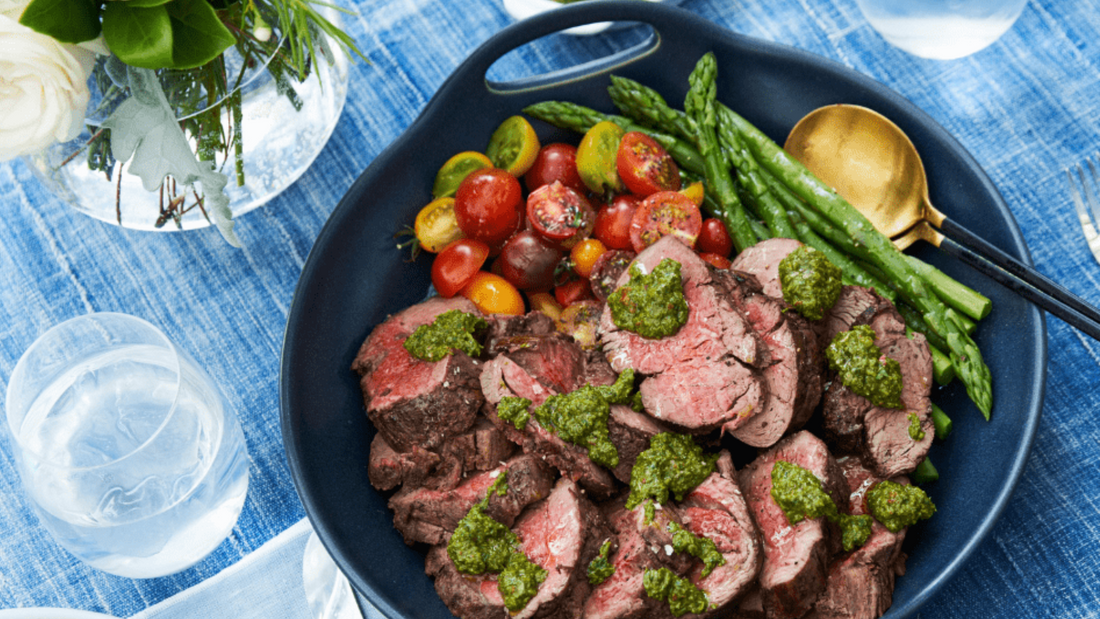Let’s be honest — red meat has become a bit of a hot topic. One minute it’s the bad guy, the next it’s the superfood your trainer recommends. So, what’s the truth? Like most things in health and nutrition, it’s not black and white. Red meat isn’t inherently bad — it’s often just misunderstood.

When eaten in moderation, prepared with care, and included as part of a healthy, active lifestyle, red meat can be a smart, satisfying, and nutrient-rich choice. Whether you're hitting your protein targets, trying to stay energized throughout the day, or just love a good steak, this one's for you.
The Nutritional Upside of Red Meat

Complete Protein That Works For You
You’ve probably heard that red meat is packed with protein, and it’s true. But it’s not just about quantity. Red meat provides all the essential amino acids your body needs to build and repair muscle. If you’re active or just want to stay strong as you age, this is a big deal.
Iron That Actually Gets Absorbed
Tired all the time? It might be low iron. Red meat offers heme iron, the form your body absorbs best. That’s why a little beef or lamb can go a long way — especially for women, athletes, or anyone feeling a little run-down.

More Than Just Protein
Red meat isn’t just about muscle. It’s also rich in B12 for brain health, zinc for immunity, and other goodies like selenium and niacin that help keep your energy and metabolism humming. It’s nature’s multivitamin — with flavour.
So... Why the Bad Press?
Not All Meat Is Equal
Let’s get one thing straight: the real health concerns often come from processed meats — think bacon, hot dogs, and sausages. These are very different from a grilled steak or a roast lamb rack. It’s the preservatives, sodium, and additives in processed meat that raise red flags, not the meat itself.
The Way You Cook It Matters
Overcooking or charring meat at super-high heat can create harmful compounds (HCAs and PAHs). But you can avoid that with gentler methods like slow cooking, roasting, or sous vide. Delicious and safer? Yes please.
Stats Without the Full Story
Many red meat studies show correlation, not causation. In other words, people who eat more red meat might also be smoking, exercising less, and skipping veggies. It’s often the lifestyle — not just the meat — that’s to blame.
It’s Personal — Because You Are
Your Body, Your Rules
Some people tolerate red meat really well. Others don’t. It depends on your genetics, your gut health, and even your stress levels. There’s no one-size-fits-all diet, so pay attention to how your body feels.
Lifestyle Is the Bigger Picture
If you’re moving your body, eating plenty of plants, and not overdoing it, red meat can be part of your healthy rhythm. But if your days are all processed food and couch time, any food — not just meat — becomes a problem.
What Science Actually Says
What the WHO Meant
In 2015, the World Health Organization said processed meat is a Group 1 carcinogen (like smoking), and red meat is a Group 2A (“probably carcinogenic”). That sounds dramatic — but it’s based on the strength of the evidence, not the size of the risk.
What’s the Real Risk?
That often-quoted “18% increased cancer risk” applies to people eating 50g of processed meat every day. In real-world terms, the risk for an occasional steak eater is tiny. Don’t let headlines scare you — look at the details.
Why There Might Be a Link
Some researchers believe it’s down to compounds formed during cooking, excess iron, or preservatives in processed meat. But again, most of this risk is linked to how much, how often, and what else is on your plate.
Yes, You Can Be Healthy and Eat Red Meat
Red meat fits into a healthy lifestyle — especially when it’s lean, unprocessed, and not the only thing on your plate. Combine it with fibre-rich veggies, whole grains, and regular movement, and you’ve got a recipe for wellness.

A few servings a week of high-quality red meat can help you meet your protein needs, support energy levels, and make your meals satisfying and enjoyable. Sounds like balance to us.
What Singapore’s Health Experts Recommend
Follow the Plate
The Health Promotion Board’s “My Healthy Plate” is simple: half veggies and fruit, a quarter whole grains, and a quarter protein-rich foods — red meat included.
How Much Is Right?
Adults are encouraged to eat 2–3 servings of meat or alternatives a day (each serving is about 90g cooked). If you’re over 50, bump that to 3 to help preserve muscle mass. Think palm-sized portions, not giant slabs.
Choose Lean, Skip the Processed
Opt for lean, skinless cuts. Processed meats? Keep them occasional, especially if you want to align with public health goals around sodium and fat intake.
How Much Is Too Much?
What the Singapore Cancer Society Advises
Try to stay under 510g of cooked red meat a week — that’s around 70g a day. Not hard when you mix in other proteins like fish, eggs, and plant-based options.
Mix It Up
Balance is key. A week might look like: grilled ribeye one night, chicken breast the next, tempeh stir-fry another. It’s variety that keeps your body nourished — and your tastebuds happy.
Final Thought: Real Food, Real Life
You don’t need to fear red meat — just be thoughtful. Go for quality over quantity, cook it well, and enjoy it as part of your bigger lifestyle. Because food is meant to nourish you, fuel you, and bring joy to your plate.
A good steak isn’t just tasty. It can be smart, satisfying, and 100% part of a healthy way of living.
Ready to make better meat choices? Shop premium, responsibly sourced cuts today at The Meat Club — where quality meets convenience.


